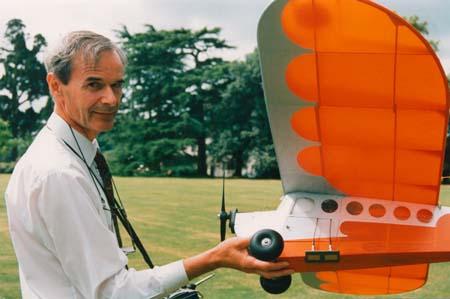When the local electronics research labs wanted to show off their Miniature Radar Altimeter (MRA) to their customers and the technical press, I was asked if I could help. The MRA, together with its antenna, power supply and downlink transmitter amounted to a payload of just over one pound. There was just enough room to acommodate the electronics under the wing and the extra power pack went in the belly of the aircraft. I first did trials by adding payloads of lead and was surprised to find that the model coped remarkably well. So well in fact that no changes were made to the power system. The Lazy Bee's limited ground clearance however vanished altogether and so hand launching was necessary. On the display days the Bee was launched in a cornfield well away from the watching guests. There was a strong breeze which made it possible to hover over the display area whilst the engineers explained the display on the laptop on the ground. The Bee was then coaxed forward into the wind, passing over a clump of trees to demonstrate the altimeter's sensitivity. After two or three circuits, the model was brought round to land back in the cornfield and the payload battery and flight pack were put on charge ready for the next flight. Demonstrations were flown over two days in winds gusting to force 5 at times (attempts to demonstrate the MRA in a tethered hot air balloon had to be abandoned after the restraining ropes broke the burner frame!). All in all, it was an enjoyable and rewarding experience and my respect for this humble little plane grew enormously. |
||||
